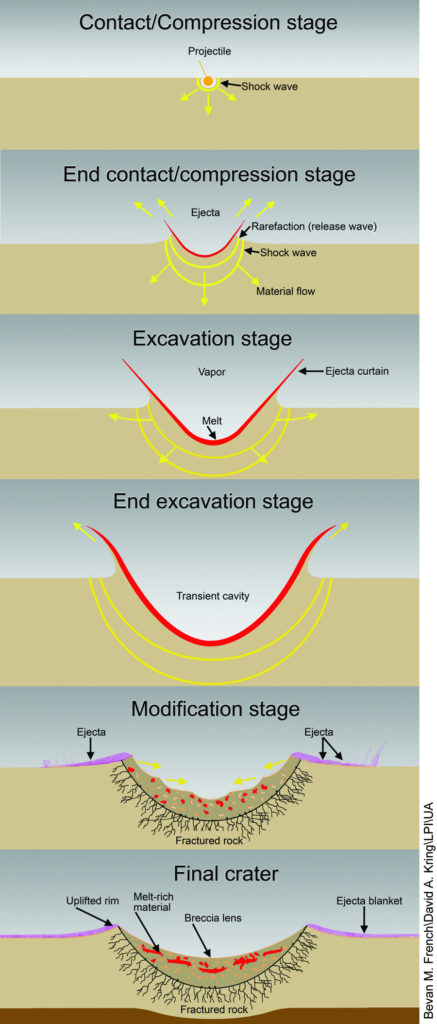Impact craters reveal one of the most spectacular geologic process known to human beings. During the past 3.5 billion years, it is estimated that more than 80 bodies, larger than the dinosaur-killing asteroid that struck the Yucatan Peninsula 66 million years ago, have bombarded Earth. However, tectonic processes, weathering, and burial quickly obscure or destroy craters. For example, if Earth weren’t so dynamic, its surface would be heavily cratered like the Moon or Mercury.
Work by B.C. Johnson and T.J. Bowling predicts that only about four of the craters produced by these impacts could persist until today, and geologists have already found three such craters (larger than 170 km in diameter). Their study, published online for Geology on 22 May 2014, indicates that craters on Earth cannot be used to understand Earth’s bombardment history.

Formation of a simple crater. Image Credit: Illustration from an educational poster, Geological Effects of Impact Cratering, David A. Kring, NASA Univ. of Arizona Space Imagery Center, 2006. Modified from a figure in Traces of Catastrophe, Bevan M. French, 1998 – modified from a figure in Impact Cratering on the Earth, Richard A. F. Grieve, Scientific American, v. 262, pp. 66–73, 1990.
Johnson and Bowling write, however, that layers of molten rock blasted out early in the impact process may act as better records of impacts — even after the active Earth has destroyed the source craters. The authors suggest that searches for these impact ejecta layers will be more fruitful for determining how many times Earth was hit by big asteroids than searches for large craters.
Key: WFS,World Fossil Society,Riffin T Sajeev,Russel T Sajeev



 May 25th, 2016
May 25th, 2016  Riffin
Riffin 
 Posted in
Posted in  Tags:
Tags: 